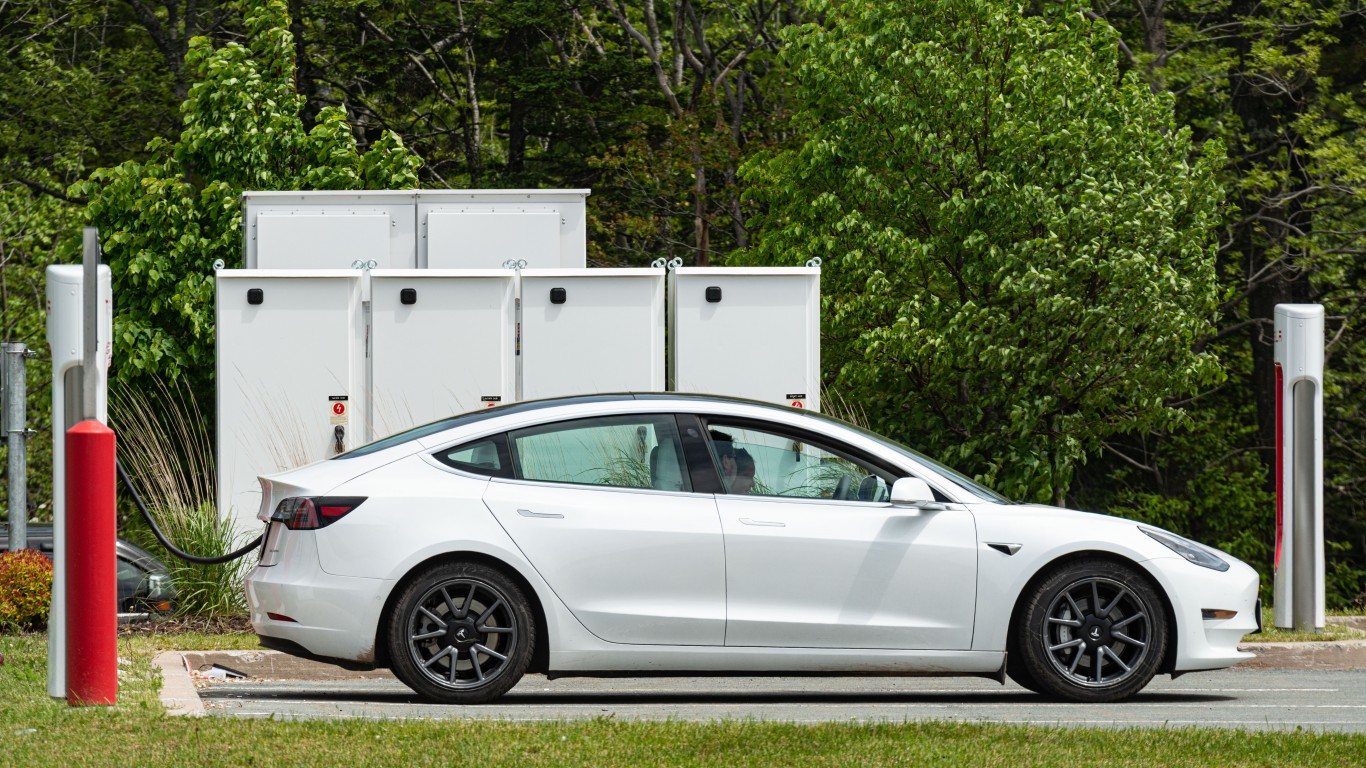
The auto business is supposed to be in great shape. A surge in demand has kept dealer lots empty. New cars were in short supply during much of the COVID-19 pandemic because of parts shortages. The average price of a new car sold in America has hit almost $50,000. Dealers no longer have to aggressively offer incentives to bring in buyers. For manufacturers, it is heaven. (These are the best- and worst-built cars in America.)
[in-text-ad]
So, why have the shares of Ford Motor Co. (NYSE: F) and General Motors Inc. (NYSE: GM) dropped sharply in the past year? The Dow Jones industrial average is up 4%, but shares of the two big American automakers are down by 10%. These companies have two significant problems. They have to support huge legacy gasoline-powered car production. And they are not electric vehicle (EV) companies by any stretch of the imagination.
Tesla Inc. (NASDAQ: TSLA) has by far the largest share of the EV market in America. It has grown from a startup to a major corporation. It could sell as many as 2 million cars this year. Tesla’s market cap is still tenfold greater than GM’s or Ford’s. Ford and GM have a great deal of catching up to do. And, they not only have to be concerned with Tesla. Every major car company in the world is in the midst of spending tens of billions of dollars for a future they believe will be “all electric.” Some estimates are that over half the cars sold in the world in 2030 will be EVs.
Ford and GM sold very few EVs last year. In each case, in the United States, it was in the tens of thousands. China is a more competitive market for EVs because of local manufacturers. That means GM and Ford will find it almost impossible to be EV forces in the world’s largest auto market by far.
GM and Ford are beaten down, and for good reason.
Are You Ahead, or Behind on Retirement? (sponsor)
If you’re one of the over 4 Million Americans set to retire this year, you may want to pay attention.
Finding a financial advisor who puts your interest first can be the difference between a rich retirement and barely getting by, and today it’s easier than ever. SmartAsset’s free tool matches you with up to three fiduciary financial advisors that serve your area in minutes. Each advisor has been carefully vetted, and must act in your best interests. Start your search now.
Don’t waste another minute; get started right here and help your retirement dreams become a retirement reality.
Thank you for reading! Have some feedback for us?
Contact the 24/7 Wall St. editorial team.




